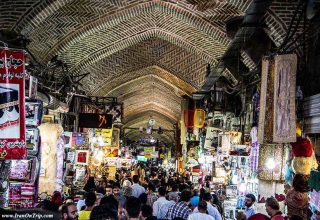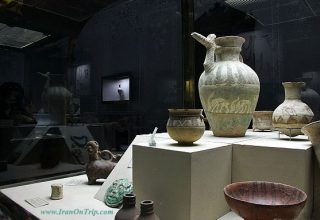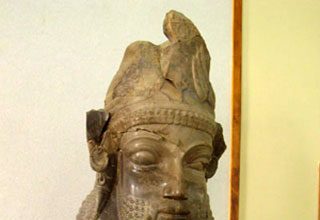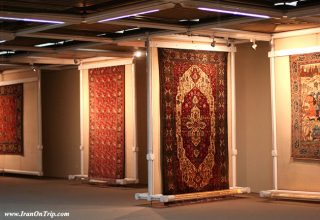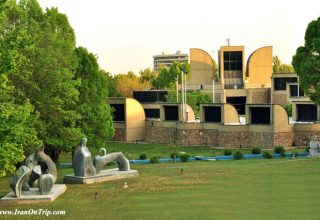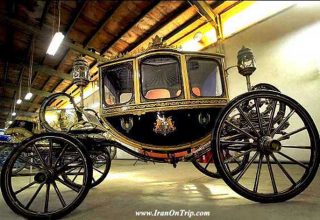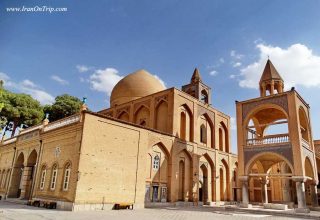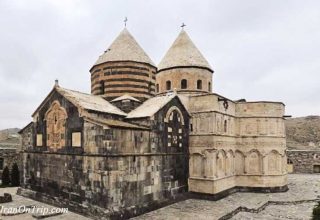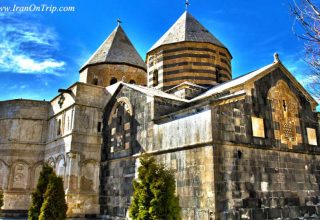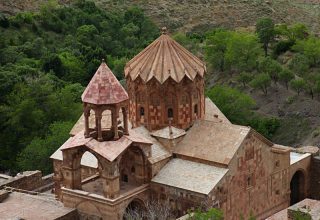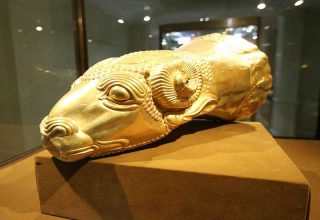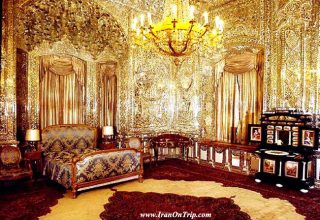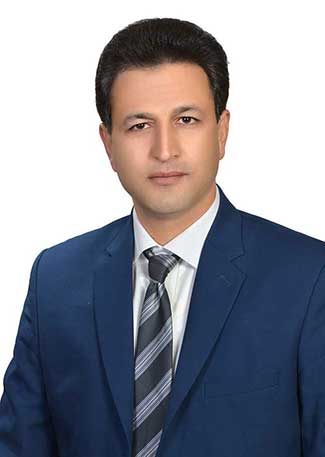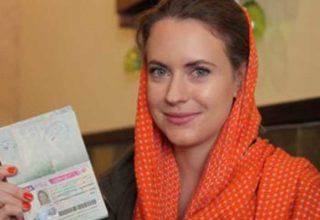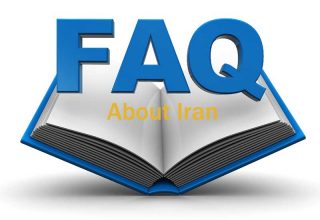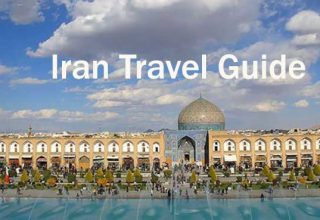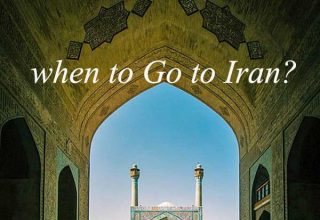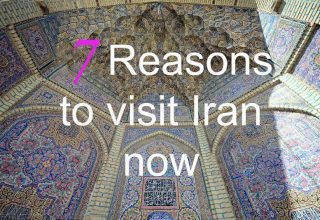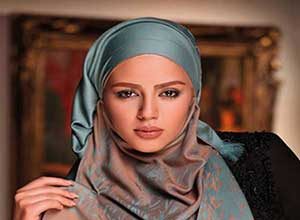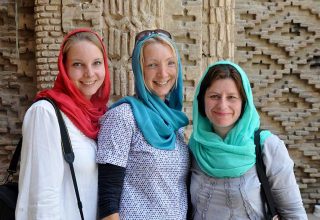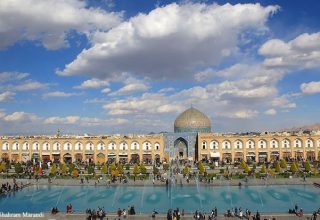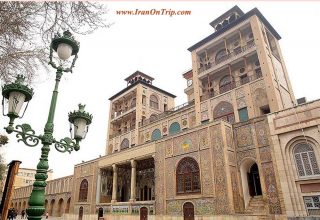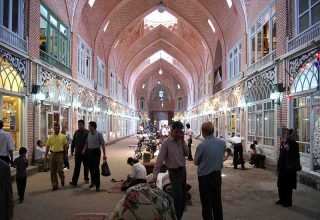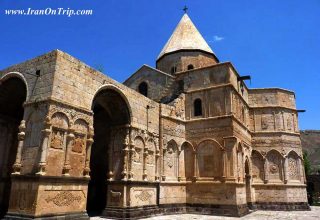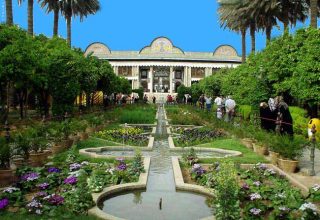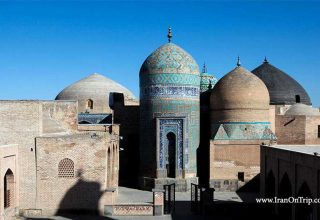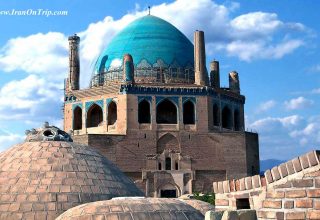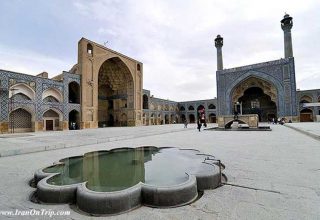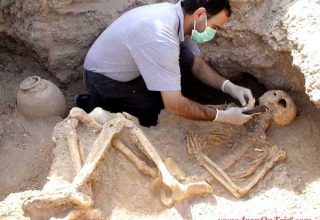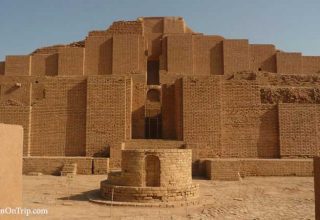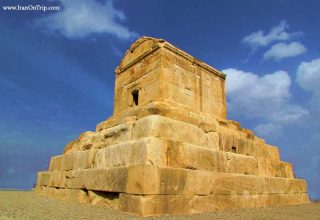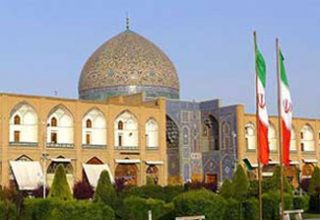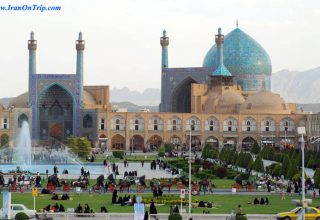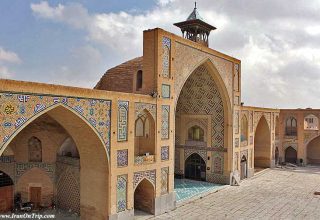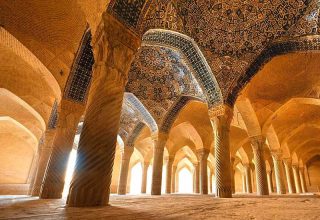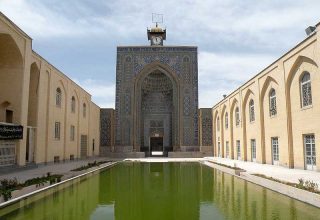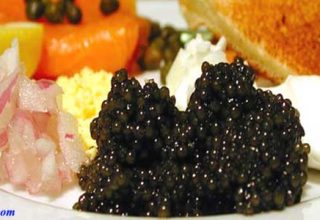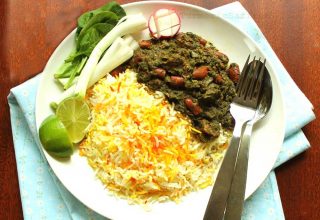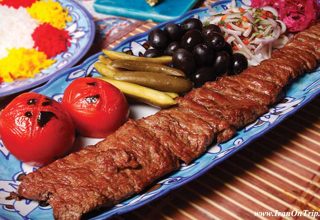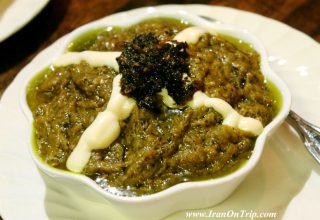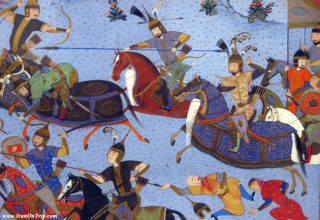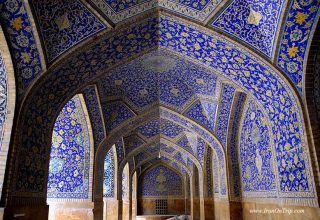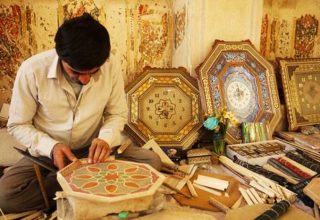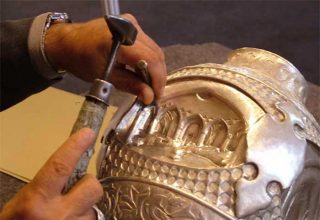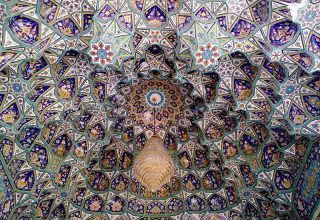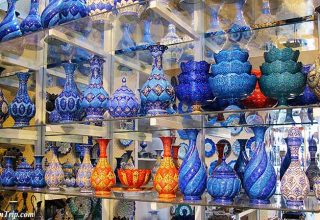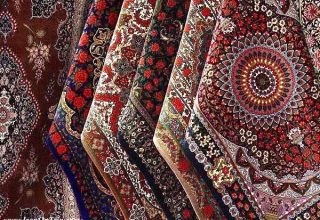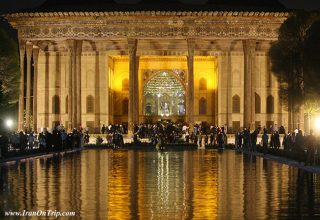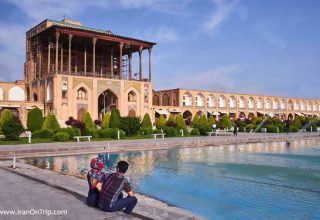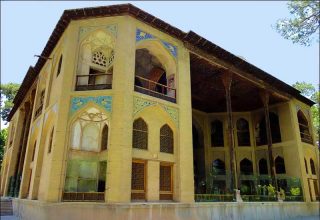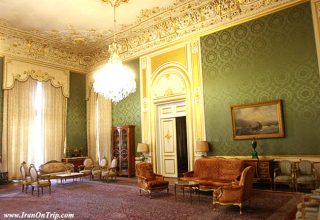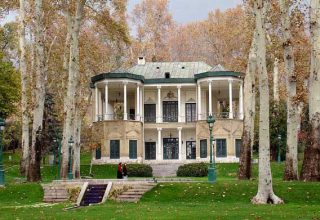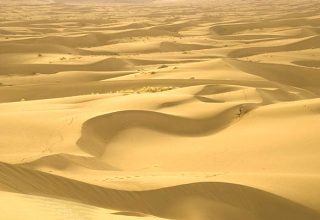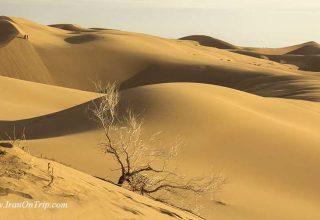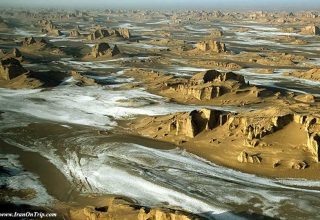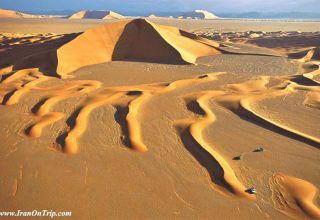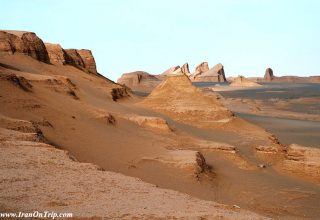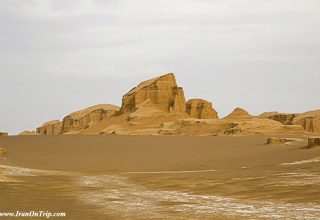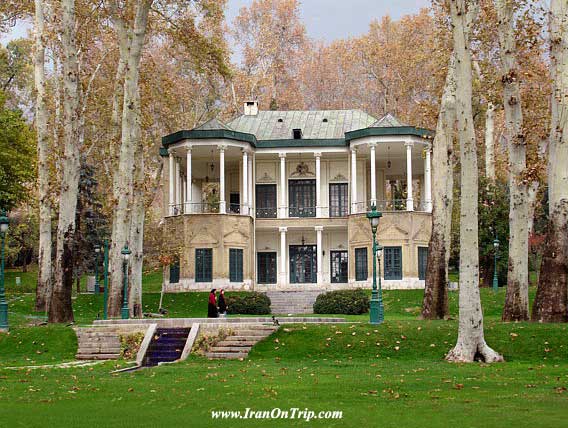
Niavaran Cultural – Historical Complex is situated in the north eastern part of Tehran (Shemiranat). Its formation dates back to the Qajar Dynasty. This Complex which has been changed to a museum after the Islamic Revolution was administered jointly with Sa’adabad Complex till 1378 AH (1999), and became independent in 1379 AH (2000). Presently, it is comprised of five museums (Niavaran Palace Museum, Ahmad Shahi Pavilion, Sahebqaranieh Palace, Jahan Nama museum and the private library), and other cultural, historical and natural attractions including the Blue Hall, Private Cinema, Jahan Nama Gallery, and Niavaran Garden
Main Palace
The Niavaran Palace is situated in the north eastern part of the Niavaran Garden, in 9000 square meters area, with a two and half floors building. The building of this palace began in 1337 AH (1958) by an Iranian designer, and following a short delay in its construction, it was completed in 1346 AH (1967) and used in 1347 AH (1968).
At the beginning this building was planned to be used as the reception house for the foreign guests, but it was later on used as the residing place for Mohammad-Reza Shah and his family. This building was designed by Mohsen Foroqi and implemented by Farmanfarmayan Company.
The quadrilateral design of the palace and its interior archeological designing is inspired by Iranian archeology while making use of modern technology. Its decorations have also been inspired by the pre and post Islamic art. The gypsum work has been carried out by Master Abdollahi, the mirror work by Master Ali Asghar, the tile work of the outer part by master Ibrahim Kazempour and Ilia. The building floor is covered by black stone and has an aluminum sliding roof. The internal decoration and furniture of the palace have been designed and implemented by a French group.
In the ground floor of this building there is a great hall in which all the rooms are situated, including a private cinema, dining room, guest room, waiting room and lateral halls as well as the Blue Hall.
In the half floor of this building, the office, conference room, Farah Diba’s secretary’s room, Leila’s bedroom and her retainer’s room.
In the stairways there is a room where Mohammad-Reza’s military uniforms and official suits and his medals are kept.
In the third floor, Pahlavi’s resting place and his children’s and their retainers rooms are situated. These places are all decorated with precious paintings, carpets and gifts received from different countries.
Ahmad shahi Pavilion
Covering an area of 800 square meters north of Sahebqaraniyeh Palace, this two-storied pavilion was built in the closing days of the Qajar period, as a private resting retreat for Ahmad Shah with brick facades and decoration The brick facades have various designs and are in buff color. The entrance of the pavilion is situated in the southern side of the building, which is joined to the pavilion by various stairs which pass aside a pond covered with tiles.
The Ahmad Shahi pavilion after a restoration and interior additions was utilized as the residence and office of Reza Pahlavi by completely changing its furniture during the Pahlavi II.
The ground floor of this building consists of a hall with a pond made of marble stone in its center with six rooms and two corridors around. Decorative items made of silver, bronze, ivory, wood and souvenirs from different countries such as India, paintings, medals, etc. have been exhibited in this place. Also other items including decorative mineral stones, a stone from Moon, various plant and animal fossils are kept in this building.
The second floor of this building consists of a central hall and a four sided veranda. All around the main hall which was used as the music room, wooden shelves have been installed. All around the veranda is covered by six square brick columns and 26 round gypsum columns. The gypsum work pattern of lion and sun can be seen on the northern wall of the veranda.
Following the Islamic Revolution during the restoration and renovation stages the lower parts of its walls were also renovated and concurrent with the Cultural Heritage Week (2000) this place was also opened to public visit.
Sahebqaranieh Palace
In 1267 AH (1388), Nasser-ed-Din-Shah ordered to have the Niavaran Palace erected in two floors including Shah-neshin (formal reception area), korsi-khaneh (winter sitting room), bathroom, and forty to fifty buildings each consisting of four rooms and a terrace housed by his consorts.
During the 31st year of his reign, he called himself as the SahebQaran and hence called this palace as Sahebqaranieh.
After him Mozaffar-ed-din Shah made some changes in the building and ruined a part of the harem. The Constitution was also signed by him in the yard of this palace.
Under Pahlavi I, this palace was renovated for the marriage of Mohammad-Reza Pahlavi with Princess Fawziah for receiving the guests but due to severe winter the ceremonies were not held there.
Under Pahlavi II, Farah Diba made basic changes in its internal decorations and building, and the first floor, i.e. hose-khaneh (pool room), was used for receiving the guests and the second floor was used as the office of Mohammad-Reza Pahlavi.
Other rooms of this palace include: sofreh-khaneh (dining room), tea-house, bar, game rooms in the first floor, and meeting room, waiting room for the foreign missions, secretary, dentist room and resting place of Mohammad-Reza Pahlavi. All the doors and windows of this building are decorated with colorful glasses. It was repaired In 1374 AH (1995) and in 1377 AH (1998) re-opened as museum.
Jahan Nama Museum
In 1976, a section in the western part of the Sahebqaranieh Palace was allocated to the souvenirs received and items purchased by the Farah Diba, with four halls in the ground floor and one hall in the underground floor. On the ceiling of the main hall of this museum, exquisite paintings on wood featuring flower and bird pattern of Shiraz can be seen. This museum was opened in 1997.The works of this museum have been exhibited in two parts; pre-historic art and the contemporary art works of Iran and the world. Some of the works include, pre-Columbian works, the metal works of Lorestan, the ceramic works of Amlash, the art works of the Red Indians of the northern America related to first and second centuries before Christ, and works by contemporary Iranian artists including Sohrab Sepehri, Naser Owesi, Faramarz Pilaram, Ja’afar Roohbakhsh, Parviz Kalantari, Bahman Mohassess, Sirak Melkonian, Jazeh Tabatabai, Mash Esmail, Parviz Tanavoli, and non-Iranian artists; George Brack, Paul Gogen, Paul Klee, Pablo Picasso, Camille Pissarro, Pierre August Renoir, Diego Giacometti, Fernand Leger and Marc Chagall.
Private Library
The private library of the Niavaran Palace is situated in the eastern part of the Palace, in two floors and one underground floor in a 770 square meter area and it was built in 1976. The interior designing of this building has been carried out by Aziz Farmanfarmayan, and Charles Serigny. It possesses different features from the point of view of architecture and constructional structure and was built based on the modern architecture prevailing in the 1960s, along with a combination of glass and stone. The building is allocated to library in three separate levels. The main parts of the library consist of the reading room, the book shelves are kept in the ground and the first floors. Other existing spaces consist of the place for the person in charge of the library, the audio and visual room, toilet, etc. In addition to this a major part of the underground floor is allocated for keeping the books and the paintings.
In the interior designing of the building a combination of bronze and glass has been used to a great extent. About 300 bright cylinders provide the required lighting of the library. This library was completely reorganized after twenty five months of practical and hard efforts. This library consists of about 23,000 books, mainly in Farsi and French in the fields of literature and history of art. The oldest of these books has been printed in Paris in 1609 and the latest book of this collection has entered the library in January 1979.
Other parts of this library include a collection of art works, which consists of over 350 works and paintings. These works can show a part of the contemporary art history, especially the modern tendencies of Iranian art in the 1950s-60s. This library was inaugurated in 1994 on the occasion of the commemoration of the Cultural Heritage anniversary and the World Museum Day.
Special Offers:
Students 50% discount
Cultural Heritage and Tourism Students
and employees along with their family members free
Retired visitors, children below 7 and visitors above 70 free
Students in group and the honorable family members of the
martyrs, those wounded in war and the Rehabilitation Organization 50% discount
Off days of Museums at Niavaran Palace
•31th March
•10th April
•4th June
•5th June
•26th October
•28th November
•8th February
•9th February
Information Desk:+98(21)2228 20 20 – 2228 20 50
Tel:+98(21)2228 20 12
Fax:+98(21)2228 50 23
Address : Shahid Bahonar Square (Niavaran) ,Tehran-Iran.
Museums of Iran – Museums of Tehran – Iran Museums – Tehran Museums


